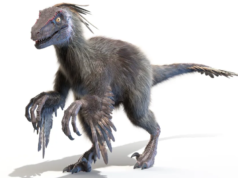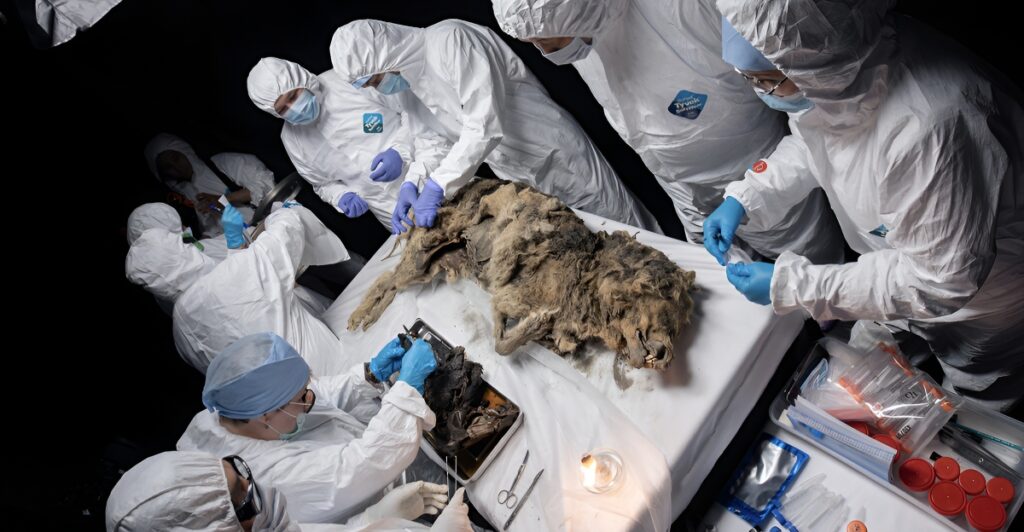
Locked in Siberian permafrost for 44,000 years, a fully intact adult wolf has emerged from the Ice Age with its teeth bared and secrets preserved. Discovered in 2021 in Russia’s Yakutia region, it’s the first complete predator of its kind from the late Pleistocene era.
That alone makes it a landmark find—one that stands apart from the usual herbivore remains. “This is the world’s first discovery of a late Pleistocene predator,” confirms Albert Protopopov of the Yakutia Academy of Sciences, underscoring its scientific weight. Unlike fragmented fossils, this frozen carnivore offers researchers a rare look at Ice Age ecology in high resolution—from DNA to diet.
As scientists dig into its genetic code and stomach contents, they may uncover answers to long-standing questions about ancient life—and the forces that shaped it.
The Discovery That Defied Time
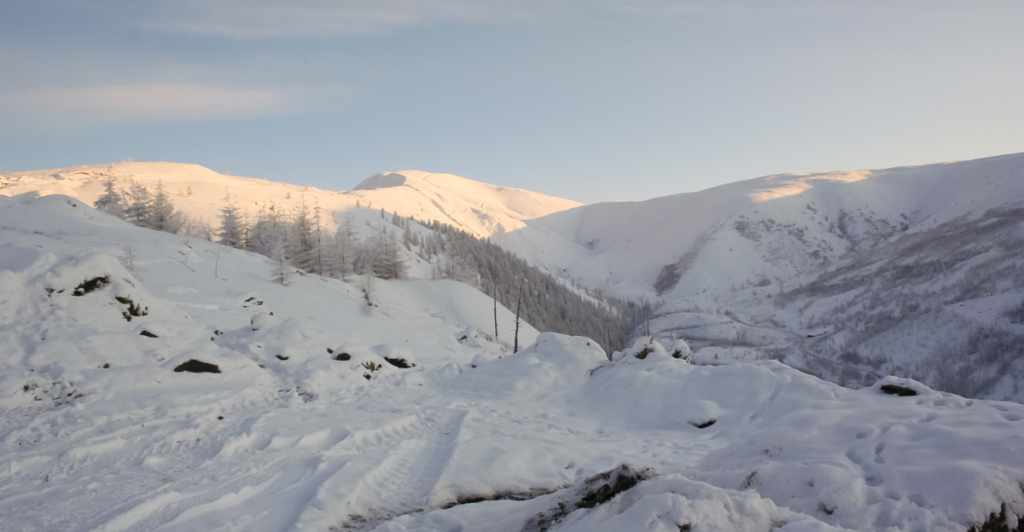
In 2021, residents of Russia’s remote Abyysky district in northeastern Yakutia uncovered an astonishing find near the Tirekhtyakh River—a wolf’s body buried roughly 40 meters (131 feet) deep in permafrost. Yakutia’s extreme climate, where 95% of the land is permafrost and temperatures plunge to -64°C (-83.2°F), enabled near-perfect preservation through natural mummification.
The cold, dry conditions effectively froze and dehydrated the wolf’s soft tissues, preserving it like a prehistoric time capsule. What sets this discovery apart is its rarity.
“Usually, it’s the herbivorous animals that die, get stuck in swamps, freeze and reach us as a whole. This is the first time a large carnivore has been found,” said Protopopov. After lying untouched for three years, scientists began their full analysis in 2024.
The Ice Age Predator’s Profile
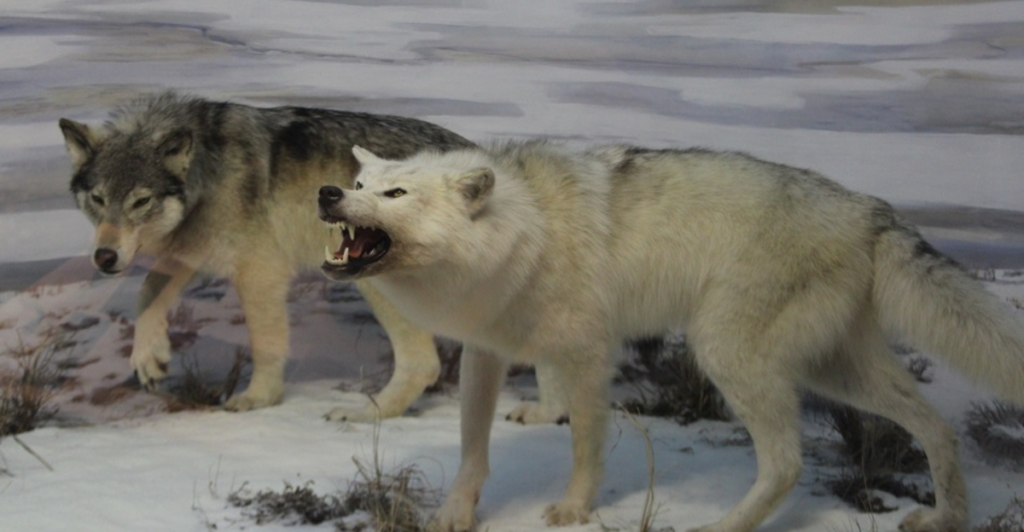
Analysis of the wolf’s teeth confirmed it was an adult male—one of the apex predators of the late Pleistocene era. It belonged to the extinct Beringian wolf population, which once roamed Ice Age Alaska, Yukon, and northern Siberia.
These ancient wolves differed sharply from today’s species, built for power and survival. “It was a very active predator, one of the larger ones. Slightly smaller than cave lions and bears, but a very active, mobile predator, and it was also a scavenger,” said Protopopov.
Beringian wolves had bulkier frames, with reinforced jaws and teeth strong enough to hunt Ice Age megafauna. Their world was an unforgiving, frozen plain populated by mammoths, woolly rhinos, and other massive creatures long vanished from Earth’s ecosystems.
The Mummification Miracle
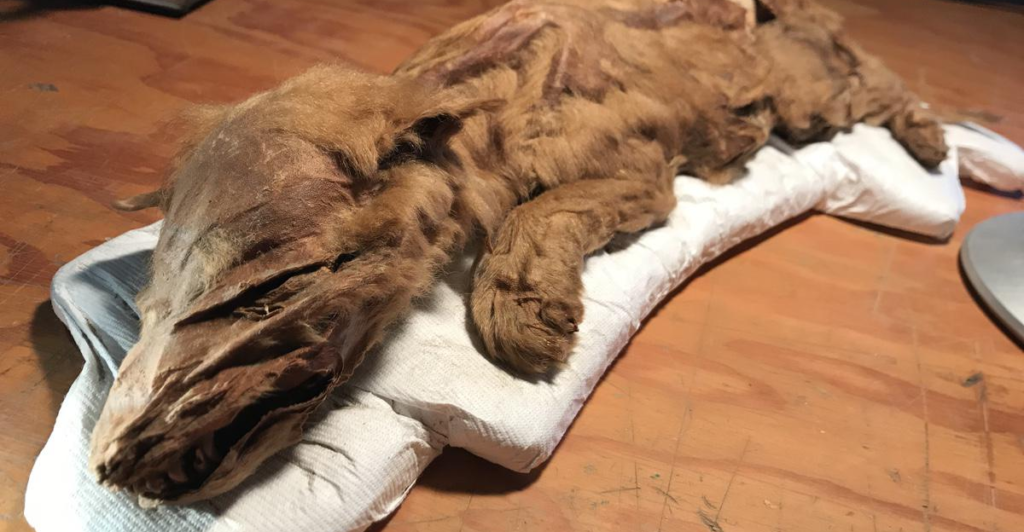
The extraordinary preservation of this 44,000-year-old wolf is the result of a rare natural alignment. For such intact mummification to occur, “the animal has to die in a permafrost location, where the ground is frozen all the time, and they have to get buried very quickly, like any other fossilization process,” explains paleontologist Julie Meachen.
That rapid burial is crucial—”if it lays out on the frozen tundra too long it’ll decompose or get eaten.” The permafrost halted decay by freezing and dehydrating the soft tissue, preserving the body in exceptional detail.
What sets this discovery apart is its completeness: fur, teeth, internal organs, and even stomach contents remain intact, offering scientists a rare, full-body glimpse into the anatomy, diet, and environment of an ancient Ice Age predator.
Secrets in the Stomach
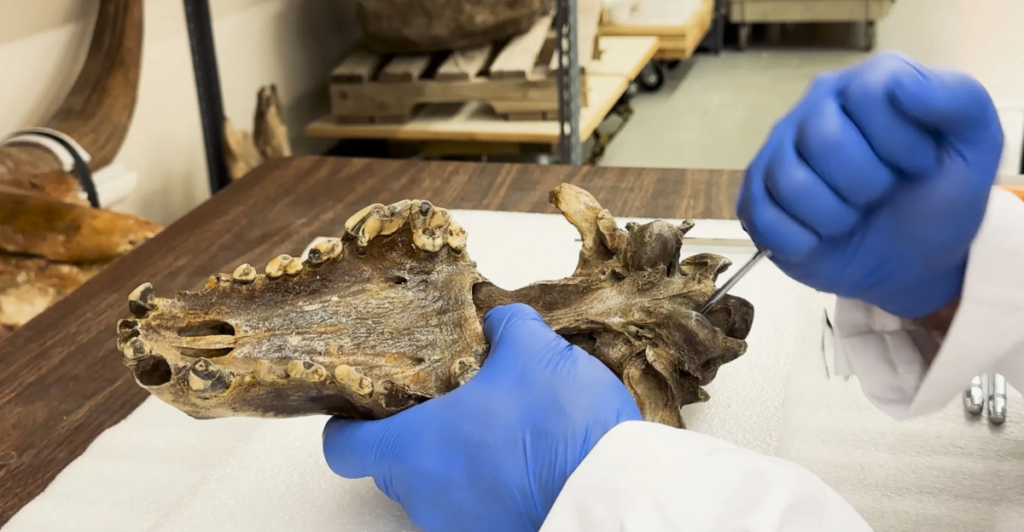
One of the most scientifically valuable features of this Ice Age wolf is its intact gastrointestinal tract, offering an unusually clear look into the diet of a long-extinct predator. Researchers are especially intrigued because, as Albert Protopopov notes, “his stomach has been preserved in an isolated form, there are no contaminants.”
That rare level of purity could reveal not just the wolf’s last meal, but also what its prey had eaten—what Protopopov calls “a snapshot of the biota of the ancient Pleistocene.”
Earlier finds, like the Canadian wolf pup Zhùr, showed surprising results—such as a diet rich in salmon, challenging the idea that ancient wolves relied solely on big game. This Russian specimen may likewise reshape our understanding of prehistoric food chains.
Ancient Pathogens Preserved
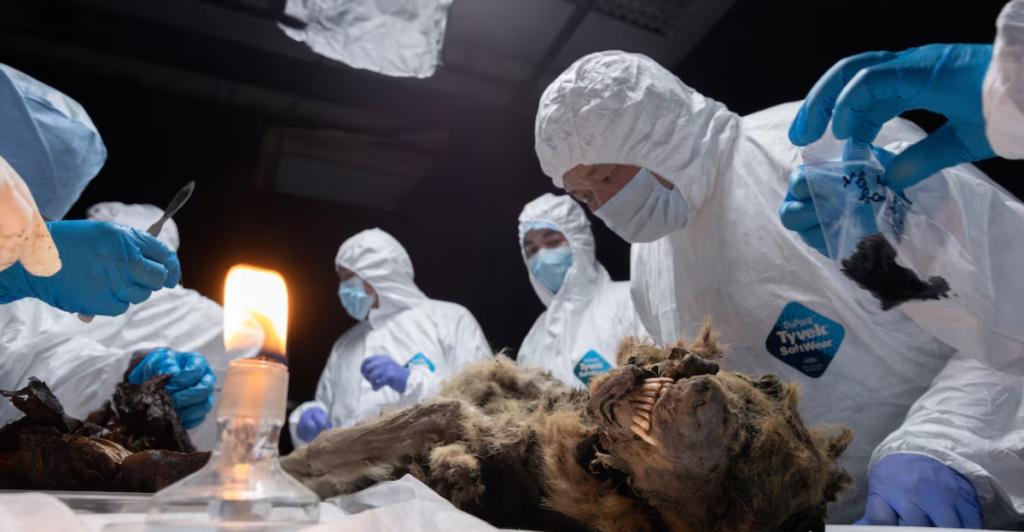
Researchers are turning to a 44,000-year-old wolf carcass to explore bacteria and viruses frozen in time. “We see that in the finds of fossil animals, living bacteria can survive for thousands of years, which are a kind of witnesses of those ancient times,” says Artemy Goncharov, who studies ancient viruses.
Encased in permafrost, these microorganisms may have remained in a suspended, hibernation-like state since the Pleistocene era. Beyond the intrigue, the work could unlock vital insights into “ancient microbial communities and the role of harmful bacteria during this period.”
According to Goncharov, some of these ancient microbes might even lead to breakthroughs in modern medicine, since “it is possible that microorganisms will be discovered that can be used in medicine and biotechnology.”
Genetic Secrets Unlocked
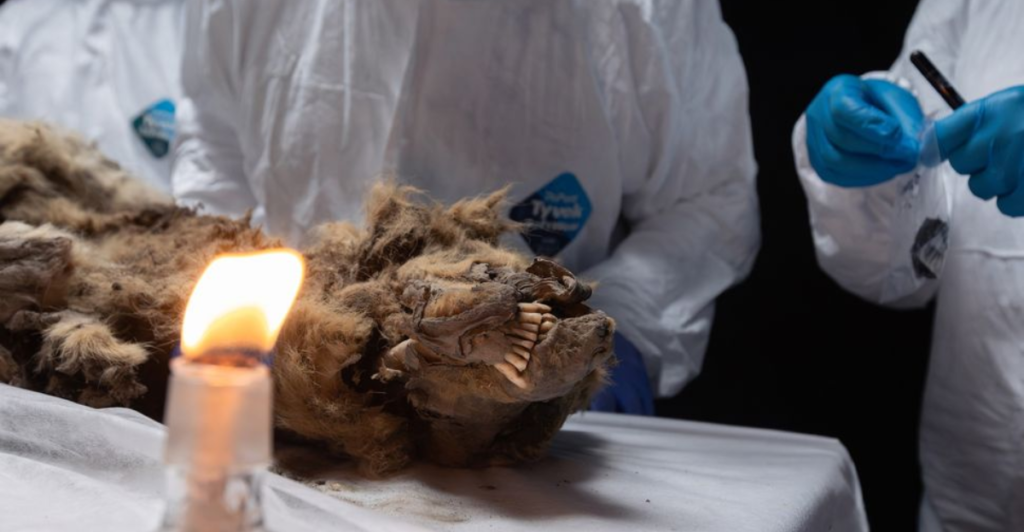
DNA from a 44,000-year-old wolf is shedding light on the evolutionary ties between Ice Age and modern wolves. Research into Beringian wolves has uncovered deep genetic links stretching across continents.
Some specimens share identical maternal DNA with wolves from Ukraine, the Crimean Peninsula, and the Altai Mountains—dated between 28,000 and 33,000 years ago—highlighting broad interconnections across Eurasia. Scientists also found genetic ties between Beringian wolves and four unique modern European DNA haplotypes, including markers now seen only in wolves from Italy and Romania.
This evidence maps ancient migration routes and lineage shifts. As habitats and prey changed with the climate, today’s wolves emerged from these resilient ancestors—“genomic witnesses” to a world transformed over thousands of years.
The Physical Adaptations of an Ice Age Hunter

The Beringian wolf’s physical traits reflect impressive adaptations to the severe conditions of the Ice Age. Unlike modern wolves, these ancient predators had a distinct skull shape with a shortened, laterally compressed snout and “dishing of the rostrum” when viewed from the side.
They also featured smaller occipital and supraoccipital crests. While similar in size to today’s Alaskan Interior wolves—measuring up to 97 cm (38 in) at the shoulder and 180 cm (71 in) in length—the Beringian wolves were more robust.
Their strongest advantage lay in their powerful jaws and teeth, superior even to those of California’s Rancho La Brea wolves. These adaptations allowed them to hunt Pleistocene megafauna, including young mammoths and woolly rhinoceroses, cementing their role as apex predators.
Life in the Pleistocene Tundra

The well-preserved wolf offers a rare glimpse into the vastly different ecosystem of Pleistocene Beringia, when the Bering land bridge linked present-day Alaska and Siberia. Starting around 70,000 years ago, wolves spread across North America via this land connection, which vanished about 23,000 years ago during the Late Glacial Maximum.
The wolf roamed a cold, megafauna-rich landscape, home to now-extinct creatures like mammoths and woolly rhinoceroses. Fascinatingly, studies of ancient wolves, such as a 57,000-year-old pup named Zhùr found in the Yukon, show dietary surprises—Zhùr ate large amounts of fish, especially salmon.
This discovery challenges old beliefs about wolf diets, highlighting their varied feeding habits. The Russian wolf offers fresh insights into predator-prey dynamics, shedding light on interactions in an ecosystem reshaped by climate change.
Future Scientific Frontiers

This remarkable wolf specimen marks the start of a new era in Ice Age research. Scientists are using state-of-the-art techniques to unlock as much information as possible from this rare find. Future research will focus on the wolf’s genome to better understand its connection to both other ancient wolves and modern populations, potentially reshaping our view of canid evolution.
Researchers also plan to compare it with another ancient wolf found in Siberia in 2023, further expanding our knowledge of Pleistocene predators. With climate change accelerating permafrost thawing, more preserved specimens may surface, highlighting the need for urgent preservation efforts.
The insights gained from this wolf will reach beyond paleontology, offering valuable perspectives for fields ranging from microbiology to climate science.
The Past Illuminates Our Future
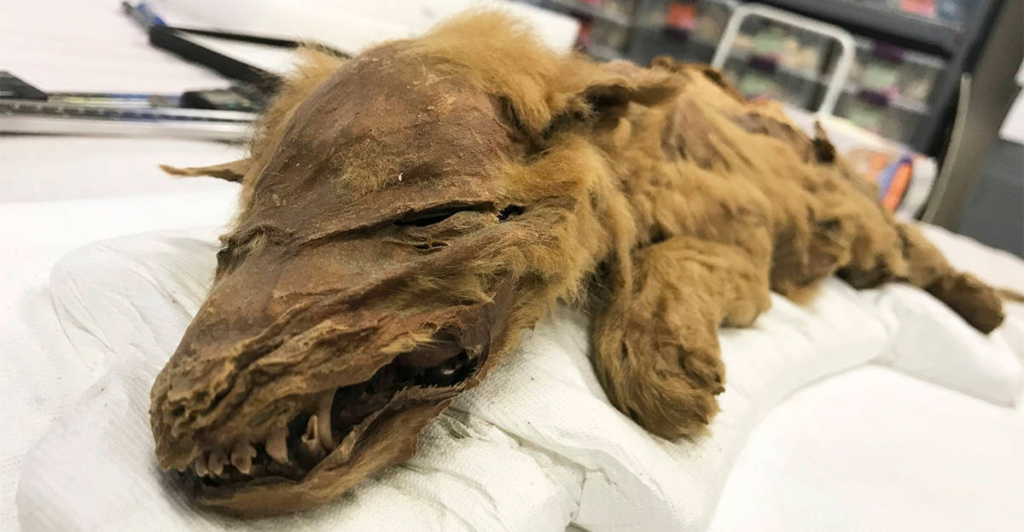
The 44,000-year-old wolf mummy is far more than a scientific curiosity; it’s a tangible link to Earth’s distant past that deepens our understanding of both history and the challenges we face today. This well-preserved specimen allows scientists to reconstruct an entire ecosystem, shedding light on ancient food webs and climate conditions from the last Ice Age.
Its preservation also raises crucial concerns about our rapidly changing planet, as warming temperatures melt permafrost that has safeguarded ancient secrets for millennia. While these changes present opportunities for new discoveries, they also threaten other undiscovered specimens.
Research on this ancient predator bridges multiple fields, from paleontology to climate science, offering insights into resilience, adaptation, and the delicate balance of life on Earth.
Explore more of our trending stories and hit Follow to keep them coming to your feed!

Don’t miss out on more stories like this! Hit the Follow button at the top of this article to stay updated with the latest news. Share your thoughts in the comments—we’d love to hear from you!



